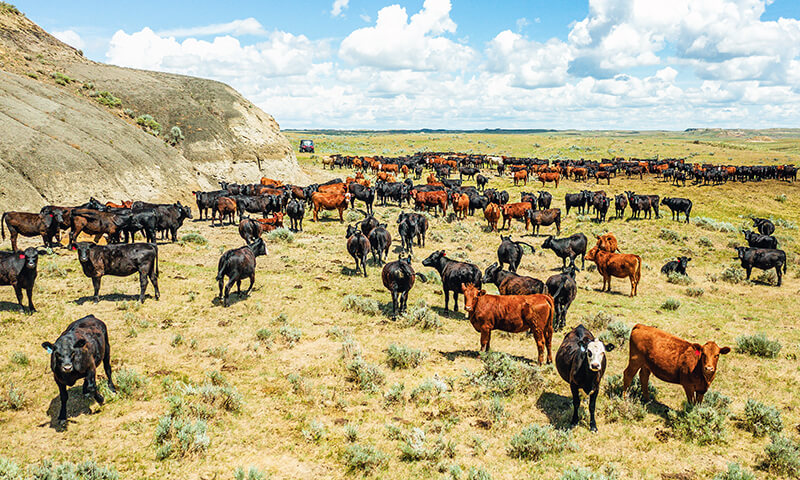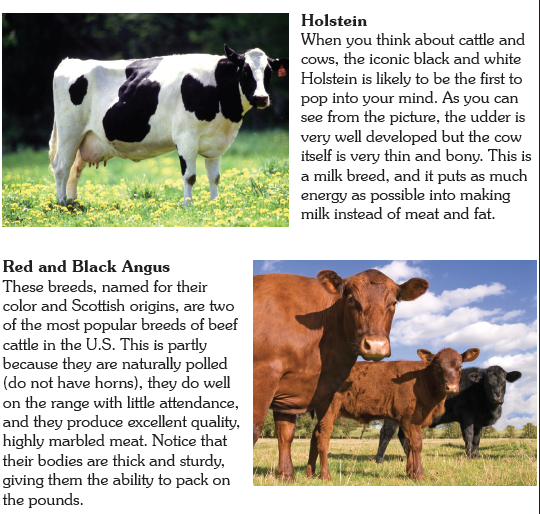The average American consumes 55 pounds of beef each year.1 As a country, we devour nearly 50 billion hamburgers annually.2 Not only is beef an important part of the American diet, but it also plays a significant role in our economy. Beef cattle are raised in every state across the nation. Texas, Oklahoma, and Missouri rank as the states with the highest inventory of beef cattle.3
Why such a high demand for beef? In addition to being prized for its delicious taste, beef provides many nutrients essential to the human diet. Humans need complete proteins with balanced amino acids in order to build muscle, nerves, and organ tissue. Animal proteins are one way to fill this nutritional need. Beef is a good source of ZIP: zinc (a mineral that ensures proper functioning of the immune system), iron (a mineral that helps red blood cells carry oxygen to body cells and tissues), and protein (a nutrient that builds, maintains, and repairs body tissues); as well as B12 (a vitamin that promotes healthy skin, nerves, and red blood cells).
Cattle are ruminant animals. Their four-compartment stomach allows them to graze pastures and rangelands, eating grass and plants (that humans are unable to digest) in areas where it would be difficult or impossible to grow other food crops. These grazing animals convert plant cellulose into high-quality food for humans. Because of this ability, as well as their generally calm and manageable demeanor, people have relied on cattle as a food source for thousands of years.
In the United States, cattle were introduced in the early 1500s, coming from Mexico through Texas and California. The English later brought large numbers of cattle when they founded the Jamestown Colony.
Rangelands cover approximately 26 percent (about 587 million acres) of land across America. This land is generally too arid and mountainous to be suitable for cultivation but can sustain grazing of domesticated animals when well managed. The pasture or range is one of the most important resources to a beef producer because it provides the food and water that the animals need at little cost and effort. Producers are allowed to use public lands for grazing and work with the U.S. Forest Service or the Bureau of Land Management (BLM) to ensure that the land remains healthy.
Typically, cattle are turned out to graze on their allotted land late in the spring. Mothers will raise their calves on the open range throughout the summer. The producers will keep a close eye on their cattle, monitoring their growth and health during this time period. Sometime in the fall, the cattle will be rounded up. At this point, the cattle that will be saved for breeding stock are separated from the cattle that will go into beef production. The breeding stock includes pregnant mothers who will give birth in the spring and then be returned to the range to complete the cycle all over again.
Some of the animals designated for beef production will be sold to stockers (also called backgrounders). Stockers are cattlemen who raise weaned steers and/or heifers until they are ready to be sent to market or to a feedlot. Most beef cattle will spend four to six months at a feedlot where they are fed a grain-based diet that helps them gain weight quickly. During this “finishing phase,” the cattle’s health is monitored on a daily basis. When market weight is reached, the animals are sent to a processing facility. The average beef animal weighs 1,200 pounds (544 kg) and yields approximately 520 pounds (236 kg) of meat. While beef cattle are primarily raised for meat, they also provide valuable by-products such as medicine, paint, adhesives, soap, cosmetics, detergents, and hundreds of other products. Including by-products, as much as 99% of the animal is used.

